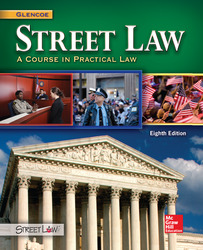1 A) in the Fourth Amendment regarding search and seizure. B) no where in the Constitution. C) in the Fifth Amendment right to due process. D) in the Fourteenth Amendment right to equal protection. 2 A) decide how important the government's interest is. B) decide how important the privacy interest is. C) balance the government's interest against the privacy interest. D) rule for the government. 3 A) consenting adult males who engage in sexual acts in the home. B) possession by adults in their home of obscene materials that are for private use. C) possession by adults of child pornography in their home that is for private use. D) males and females who engage in sexual acts in the home. 4 Family Educational Rights and Privacy Act A) provides students with the right to keep their school records private from parents. B) prohibits the release of records to other parties without parental permission. C) allows parents' access to school records of students who are 18 and older. D) requires release of records within 90 days of the request. 5 A) is a violation of the federal students' privacy law. B) is not a violation of the federal students' privacy law. C) violates the right to privacy protected by the Fourth Amendment. D) violates the right to privacy protected by the First Amendment. 6 Privacy Act of 1974 A) allows the release of statistics about the number of people receiving government benefits. B) allows the release of individual medical records. C) allows the release of individual financial records. D) allows the release of the criminal records of specific persons. 7 A) a woman's life should be protected when it is endangered by pregnancy. B) life begins at conception, and therefore must be protected from that point on. C) life begins at quickening, and therefore must be protected from that point on. D) life begins at viability, and therefore must be protected from that point on. 8 A) women must be allowed to control their own bodies and not have laws that work against their wishes. B) life begins at conception, and therefore must be protected from that point on. C) life begins at quickening, and therefore must be protected from that point on. D) a woman's life should be protected only when it is endangered by pregnancy. 9 Roe v. Wade ruling on abortionA) prohibited states from restricting abortions at any time during the pregnancy. B) divided pregnancy into three trimesters and described what, if any, regulations states could enact at each trimester. C) denied that there was constitutional protection for abortion. D) settled all the issues about abortion under the law. 10 Roe v. Wade, including thatA) states may give husbands a veto over a wife's abortion decision. B) states may not require pregnant, unmarried minors to obtain parental or judicial consent prior to seeking an abortion. C) states may require pregnant, married minors to obtain parental or judicial consent prior to seeking an abortion. D) states may criminalize the performance of late-term abortions.





